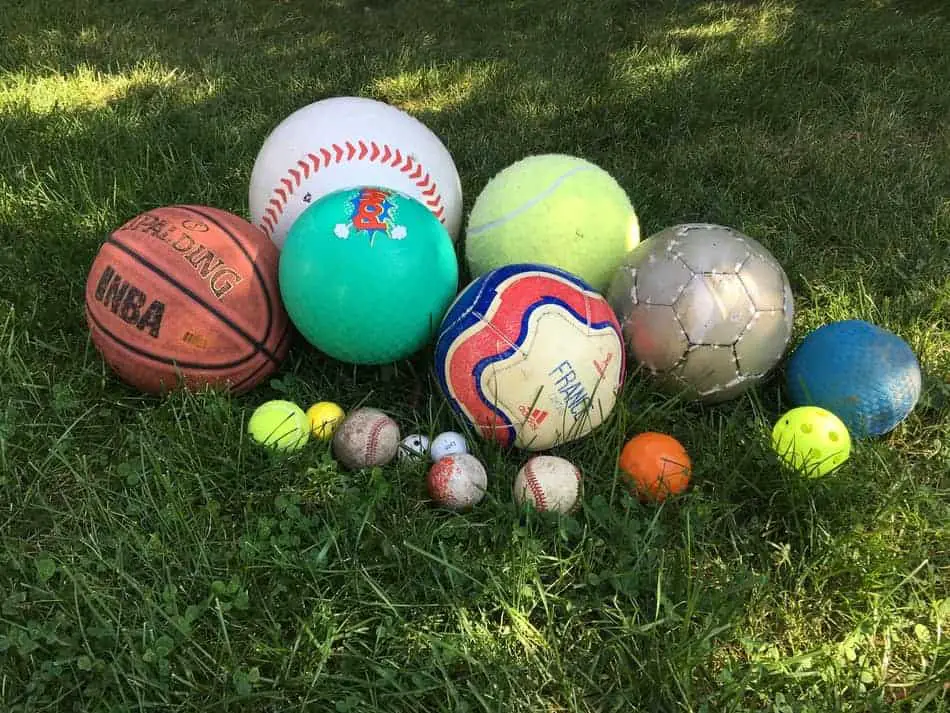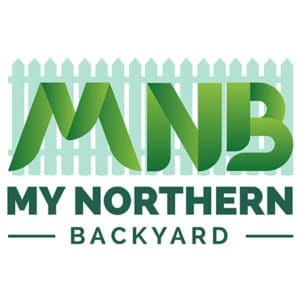
If you’re like us, you’ve got a closet, bag, box, hamper, or bucket (or all off them) full of balls of all different sizes and shapes and bored kids who are always looking for something fun to do. They’re lounging around inside watching screens, getting bored, and most importantly following you around looking for you to entertain them. I know we’ve been there.
The good news is that with that closet, bag, box, hamper or bucket, you’ve got pretty much unlimited options to keep those kids (or yourselves) entertained for hours. What I want to do in this article is take a look at how to think about backyard ball games in a way that will allow you to scale them up or down in order to adapt to the number of people that need to be entertained. So let’s get started by setting some ground rules
Ground Rule 1: Imagination
When creating a game with any ball, imagination must be your guide. Reach back to when you were a child or tween and remember the feeling of just making it up as you go along. The best way to do this might be to chose one of the categories of games that we’re going to go through below and then visualize how it’s going to play out. Think of some of the crazy things that might happen and if you care about it, set up the approach.
This doesn’t have to mean making up a ton of rules – just making sure that everyone is on the same page as far as how the game is played. The games where players have the most fun are games that can grow organically as long as everyone is playing in the same direction.
What you will need to do is be creative. If you only have a few balls and a small space you probably need to be more creative than if you have a lot of extra equipment and balls of all shapes and sizes. Be flexible and creative, and the game will grow with the playing.
Ground Rule 2: Making Up The Rules
Speaking of rules, before you begin do set the basic rules for the game. The simpler the better is typically the case – and if you’re playing something based on another sport (like soccer for instance) – it’s always best to simplify the rules from the way the game is normally played.
Before you begin, set a few basic rules for the game, and after the first iteration (or the first few minutes) stop and determine if there is anything that needs to be changed to make it more fun for everyone involved.
Game Templates
Ok! Let’s get to the game templates that you can start with to play your game. Use these templates as ideas to start with, depending on the balls and other equipment that you have. Expand on anything that makes sense for your backyard and your situation (number of players, etc…)
Target Games – Turn Based
The first game template we’ll look at is turn based target games. These are games that are not active/competitive and not based on speed – they’re purely based on being able to put the ball on target. While these games can still be fast-moving, they don’t need to be and can be played leisurely – and typically with a beverage or snack in hand. This means that they are great for any time of the year, and in any situation, as they can be played hot or cold and as other activities (cooking, swimming, conversations) are still going on.
We’ll look at three types of target games:
- Ball on ball/object games
- Ball hitting target games
- Ball into target games
All of these games can be played with any kind of ball – what will matter is your imagination on how you use those balls. I’ll give a couple of examples of how larger or smaller, heavier or lighter balls can be used in each of the types of target games to ensure that the games stay competitive but make sure you adjust the game to your situation.
Ball on Ball/Object Games
Ball on Ball or Ball on Object games are games where you use one ball to impact another ball, or a set of objects. Some classic examples of these types of games are:
- Bocce Ball
- Croquet
- Bowling/Lawn Bowling
Use the rules that make the most sense based on the kind of balls you have. If all you have is light beach balls you can play a type of soccer pool where you try and knock balls through nets (or designated net areas) by bouncing a “cue” ball off all the other target balls. If you have larger inflated balls consider making the scoring system around rolling closest to a target ball – or using them like curling stones to score points based on a target circle and knocking your opponents ball farther away. If you have smaller, harder balls it’s easy to imaging playing a game like bocce ball
Ball In Target Games
Ball in target games are games where the object of the game is to get the ball into a target of some kind. Getting the ball into the target can follow any kind of rule that you care to make up:
- You can only use a particular part of your body on the ball, or you can’t use the particular part of the body
- You can or cannot move with the ball
- You can have opposing teams or take turns
Ball in target games are very common games to play – and playing them with any ball usually means just changing some existing games with existing rules.
- Soccer is all about getting the ball in the target without using your hands or arms. You can play this with almost any round ball – you just need to adjust the size of the net and the size of the playing field. Even with a tennis ball you can use garbage can size nets and a smaller field and play one on one.
- Basketball is all about getting the ball in the target without walking, unless you’re dribbling. Any hoop you can place anywhere (including on the ground) can be used for a similar game. Even a hula hoop for a target and a beach ball for the ball will work – passing only, and don’t get within 10 feet of the hoop!
- Turn based games can be played with anything – throw a football through a tire, or a baseball into a bucket. Lob a softball or tennis ball into a net or fling a beach ball into a hula hoop. To make things more competitive, bring in elements of HORSE and make trick shots.
You can incorporate rules from anywhere into anywhere. Just do what seems most entertaining and most fun – and make sure all the players agree before the game starts.
Ball Away Games
Another option – which can also be competitive or not competitive – are games where the ball is kept away from something or someone. Two examples of this kind of game:
- Keep Up – where the players act cooperatively to try and keep the ball in the air. This can be played with any kind of ball, but certain ball types will be more difficult than others. Keeping a beach ball in the air will be much easier than keeping a football or a croquet ball in the air! Spice these up by limiting how the players can keep the ball in the air – using only a body part, staying out of a circle, etc…
- Keep Away – a more competitive game where you need 3 or more players and the goal is to keep a ball away from one or more of the players. These rules can also vary widely as you can limit where the ball handlers or the “monkey in the middle” can go, or how much they can move, or what parts of their bodies can touch the ball.
Games like Volleyball also fit into the ball away games – as the goal of the game is to keep the ball away from the ground on your side, and make it hit the ground on the opponent’s side – while only hitting it a certain way and a certain number of times.
Competitive Action Games
The last category I want to explore are competitive action games. This is where players or teams strive against each other for a specific outcome – whether that’s points, eliminations, scores, or hits.
These kinds of games can vary widely, and will sometimes require some additional materials set up to stand in for nets, targets, or goals.
Almost every type of professional sports game will fall into this category – football, basketball, volleyball, golf, tennis, squash – anything where you strive one player or team against another. Any of these games can be modified to play with what you have available.


